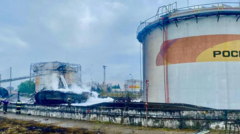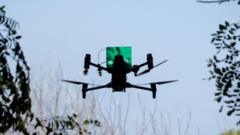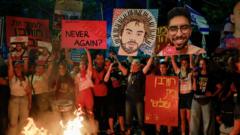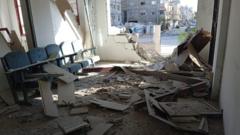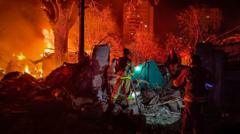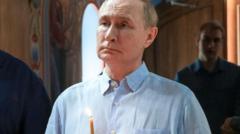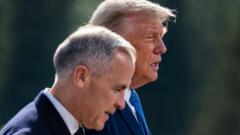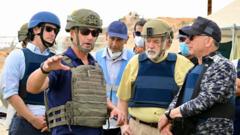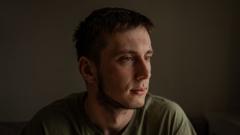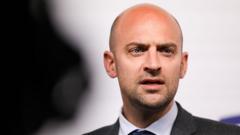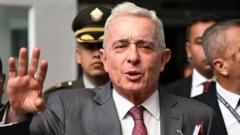In a historic moment for the Catholic Church, Pope Leo XIV leads his inaugural Mass in St. Peter's Square, drawing dignitaries and 1.4 billion faithful as he addresses significant global issues, including the urgent need for peace.**
Historic Inauguration: Pope Leo XIV's Historic Mass Unites Faithful and Leaders**

Historic Inauguration: Pope Leo XIV's Historic Mass Unites Faithful and Leaders**
Pope Leo XIV, the first American pope, begins his pontificate with a profound inaugural Mass at St. Peter’s Square, attended by global leaders and the faithful worldwide.**
Pope Leo XIV presided over his inaugural Mass on Sunday morning in St. Peter’s Square, marking the beginning of his pontificate as the first American to lead the Roman Catholic Church. With a multitude of 1.4 billion followers watching, Vice President JD Vance, Secretary of State Marco Rubio, along with other world leaders including Ukraine's President Volodymyr Zelensky and Canadian Prime Minister Mark Carney, attended the ceremony.
The Mass commenced with Pope Leo, clad in traditional vestments, praying in Latin, expressing that he hoped to be a worthy successor of St. Peter, the first Pope selected by Jesus in ecclesiastical tradition. During his homily, he emphasized the cardinals' desire for a leader who could uphold the Christian faith's rich heritage while addressing contemporary challenges.
The new pontiff, born Robert Francis Prevost in Chicago, stood in an open popemobile, waving to thousands gathered in the square who clapped and cheered, an acknowledgment of his unique heritage as the 267th pope. The historical significance of his election underscores a break from tradition, as the cardinals did not select a leader from a prominent superpower.
As he sets the initial agenda of his pontificate, Leo has identified critical issues: the potential threats posed by artificial intelligence, the call for peace in Ukraine and Gaza, and a commitment to amplifying the voices of “ordinary people.” His election comes at a pivotal time for American Catholics, characterized by increasing complexity and tension among various factions within the Church.
Attendees included priests from the Order of St. Augustine, Leo’s religious community, who gathered to support him. The emotional impact of his election was vividly felt; Father Joe Roccasalva of Tulsa recounted tears of pride and sadness upon hearing Leo’s name announced as pope, recognizing both his importance to the community and the weight of his new responsibilities.
The Mass drew attention not just for its spiritual significance but also for establishing a potential bridge between the Vatican and conservative U.S. Catholics represented by Vance. The vice president's attendance has been seen as an opportunity to reset the relationship following previous tensions with the Church under Pope Francis.
President Zelensky's presence at the Mass followed Leo’s offer to host peace negotiations between Ukraine and Russia, reflecting the Vatican's readiness to facilitate dialogue amidst ongoing conflict. His previous calls for a just and lasting peace resonate as Leo seeks to navigate these fraught global circumstances while championing the Church's mission.
As Pope Leo concluded his homily with the call for love and unity, he reinforced a message of inclusivity that extends beyond Catholicism, reaching out to all spiritual seekers and good-natured individuals worldwide. The foundation of his papacy appears set, as he prepares to lead the Church through complex challenges with empathy and a vision for engagement.

